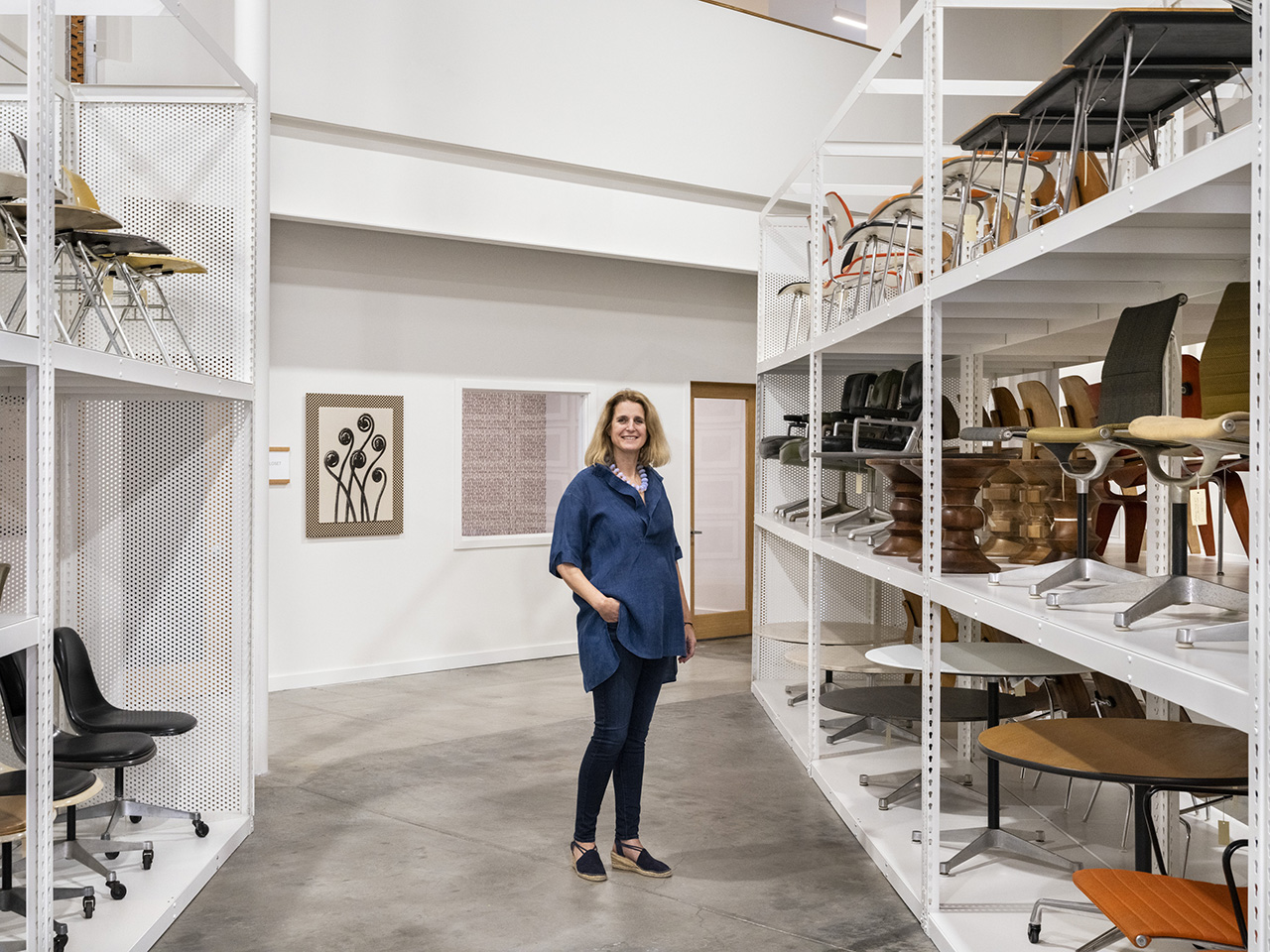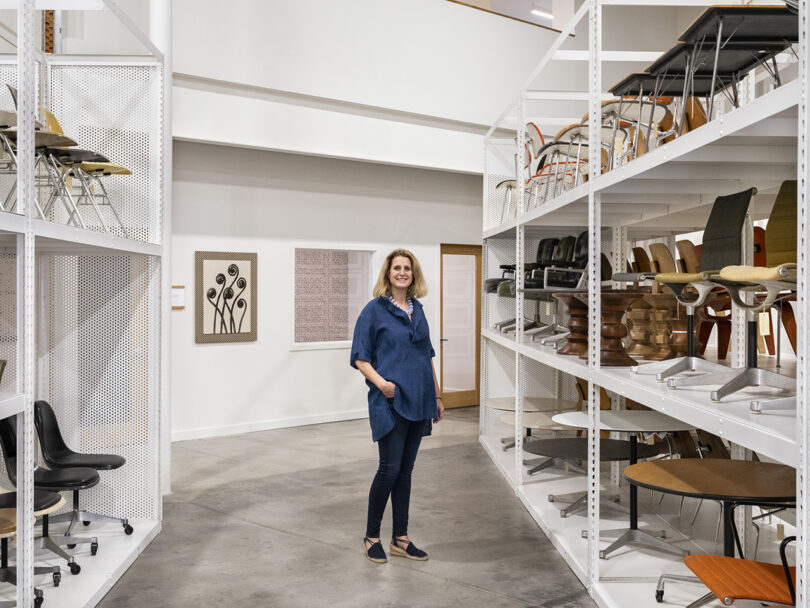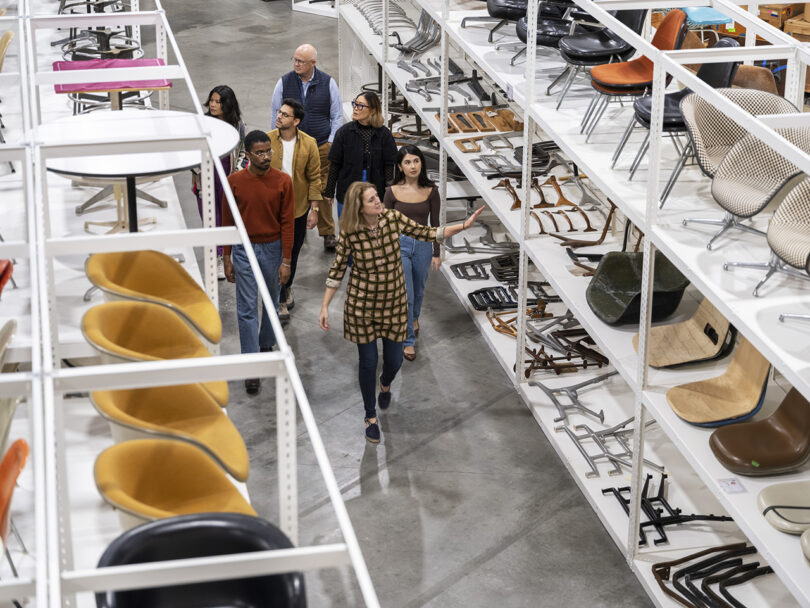Fans of Charles and Ray Eames, and their far-reaching legacy of mid-century design, would do themselves a favor by marking their calendars for a visit to Richmond, California. That’s because this month marks the Eames Archives’ inaugural welcome for guests looking to experience their new permanent collection, which showcases the design duo’s storied history of iconic artifacts guided by none other than Llisa Demetrios, chief curator and granddaughter of the legendary design couple.
The effort of the Eames Institute of Infinite Curiosity, the Eames Archives includes a Gallery, Collections Center, and Archives Study Center.
The newly curated collection will give the public access to view everything from the Eames catalog of mass-produced furniture designs to unique, one-of-a-kind prototypes close-up. Interspersed will be personal ephemera and private correspondence to give Eames enthusiasts an in-depth understanding about the couple’s lives, their creative process, and approach to design.
“It’s such a pleasure to expand the reach of the Eames Institute and further share the Collection with even more people” Demetrios says. “The Eames Archives is so special to me because it holds the things my grandparents loved and cherished – it’s an absolute joy to finally be able to share these pieces in this way.”
The Institute hosts over 40,000 Eames artifacts, including prototypes, products, tools, ephemera, and personal items owned and loved by the couple.
The Archives offers an informative and complementary exploration of the Eames House, the personal home and studio of Charles and Ray Eames located in the secluded Los Angeles neighborhood of Pacific Palisades.
Notable pieces on display with the Eames Archive include:
Airplane Stabilizer (1943) – In addition to splints, Charles and Ray developed prototype airplane parts for the US Navy. Using the Eames process, they molded and laminated plywood into aerodynamic forms for planes.
Plywood Sculpture (1943) – This is one of two extant large-scale molded plywood sculptures by Charles and Ray. The second, comparable to this in shape and form, was exhibited in 1944 at MoMA’s 15th anniversary exhibition Art in Progress: Design for Use flanked by Constantin Brancusi’s Bird in Space and an airplane propeller on an adjacent pedestal.
Molded Plywood Seat (1942) – A handmade prototype seat that was an early product of the Kazam! machine – a large wooden device built by the Eames that used an inflatable rubber pouch to mold plywood into complex compound curves.
Steinberg Diploma for Charles Eames (1950) – Charles studied architecture but never completed his degree. Artist Saul Steinberg stepped in to create a fake diploma for him, the supposed recognition of academic achievement rendered in complete gibberish.
The Eames Institute’s internal teams collaborated with Brooklyn-based designers Standard Issue, the same team responsible for the recent Eames exhibition at the Herman Miller New York flagship store.
A selection of books, vintage items, and design objects inspired by the Archives’ one-of-a-kind collection will be available for purchase by tour participants within the Institute’s new retail shop.
The Eames Archives is now open for reservations, inviting the public to guided tours led by Llisa Demetrios starting from February 14. These tours will be held Wednesdays, Thursdays, and Fridays by appointment only. Going forward, tickets for the following month will be released on the first of each month. Further information about reserving a spot visit them here.


























